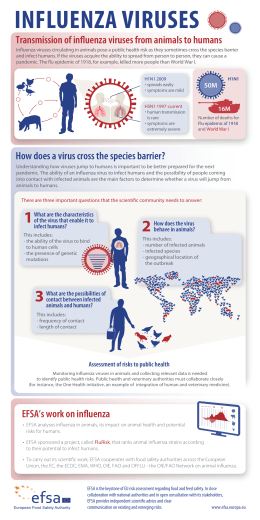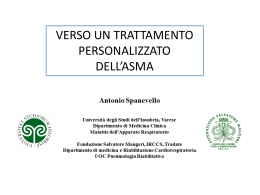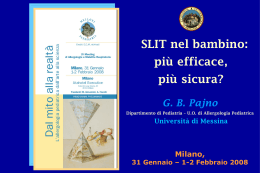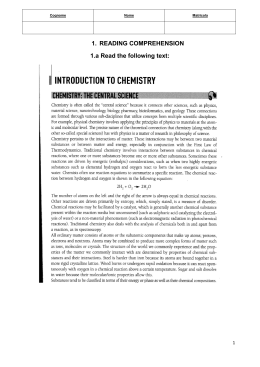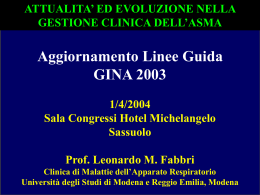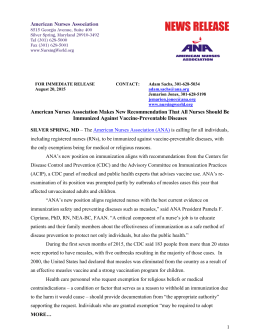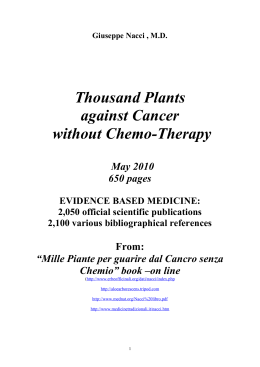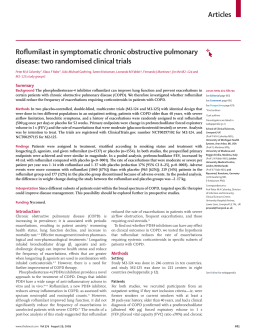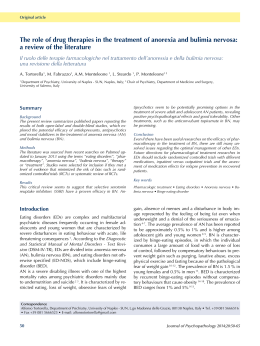Randomized trial of vitamin D supplementation to prevent seasonal influenza A in schoolchildren1–3 Mitsuyoshi Urashima, Takaaki Segawa, Minoru Okazaki, Mana Kurihara, Yasuyuki Wada, and Hiroyuki Ida INTRODUCTION Seasonal oscillation of influenza is prominent, its epidemic is explosive, and it ends abruptly. To explain this peculiar pattern, Cannell et al (1) hypothesized that the seasonal oscillation of serum vitamin D concentrations, which was recently discovered to up-regulate innate immunity, may affect the epidemic pattern of influenza. Vitamin D is mostly obtained from sun exposure; thus, serum vitamin D concentrations can be affected by season. In fact, serum concentrations of vitamin D have been shown to decrease in winter, the season when influenza occurs, to concentrations half those during the summer (1). In a post hoc analysis of side effect questions asked during a randomized controlled trial performed to determine whether vitamin D could prevent osteoporosis (2), cold and flu symptoms were reported 3 times less often in the vitamin D group than in the placebo group (3). However, although the authors conducted an additional randomized trial in 162 healthy adults, they could not reconfirm the benefit of vitamin D supplementation for the prevention of symptomatic upper respiratory tract infections (4). On the other hand, a significant inverse association between serum vitamin D intake and recent upper respiratory tract infections was seen in the third National Health and Nutrition Examination Survey (5). However, no rigorously designed clinical trials have evaluated the relation between vitamin D and physician-diagnosed influenza or delineated the necessary changes to prepare for an influenza pandemic (6). We conducted a randomized, double-blind, placebocontrolled trial comparing vitamin D3 supplements with placebo in schoolchildren to elucidate whether preventive intake of vitamin D supplements during winter and early spring seasons can reduce the incidence of seasonal influenza A. SUBJECTS AND METHODS Study design A multicenter, randomized, double-blind, placebo-controlled, parallel-group trial was conducted by 12 hospitals and 8 doctors in private practice in Japan over 4 mo (from 1 December 2008 to 31 March 2009). The study protocol was reviewed and approved by the ethics committee of all participating hospitals. The entire process of study design and protocol, data monitoring, and analyses was performed only by academic authors; there was no industry support or involvement in the study. The data monitoring center was at the Division of Molecular Epidemiology, Jikei University School of Medicine. The safety review board consisted of 2 physicians from the Jikei University Hospital, who are not coauthors of this study. Both vitamin D3 (Status D3) and placebo were purchased by the academic study group from Zenyaku Co, Ltd (Otsuka, Bunkyo-ku, Tokyo, Japan). 1 From the Division of Molecular Epidemiology (MU) and the Department of Pediatrics (MU, YW, and HI), Jikei University School of Medicine, Minato-ku, Tokyo, Japan; the Department of Pediatrics, Fuji City General Hospital, Shizuoka, Japan (TS); the Department of Pediatrics, Sado General Hospital, Sado City, Niigata, Japan (MO); and the Department of Pediatrics, Kanagawa Rehabilitation Center, Kanagawa, Japan (MK). 2 Supported by the Jikei University School of Medicine. 3 Address correspondence to M Urashima, Division of Molecular Epidemiology, Jikei University School of Medicine, Nishi-shimbashi 3-25-8, Minato-ku, Tokyo 105-8461, Japan. E-mail: [email protected]. Received December 17, 2009. Accepted for publication February 11, 2010. First published online March 10, 2010; doi: 10.3945/ajcn.2009.29094. Am J Clin Nutr 2010;91:1255–60. Printed in USA. Ó 2010 American Society for Nutrition 1255 Downloaded from ajcn.nutrition.org by guest on October 24, 2013 ABSTRACT Background: To our knowledge, no rigorously designed clinical trials have evaluated the relation between vitamin D and physiciandiagnosed seasonal influenza. Objective: We investigated the effect of vitamin D supplements on the incidence of seasonal influenza A in schoolchildren. Design: From December 2008 through March 2009, we conducted a randomized, double-blind, placebo-controlled trial comparing vitamin D3 supplements (1200 IU/d) with placebo in schoolchildren. The primary outcome was the incidence of influenza A, diagnosed with influenza antigen testing with a nasopharyngeal swab specimen. Results: Influenza A occurred in 18 of 167 (10.8%) children in the vitamin D3 group compared with 31 of 167 (18.6%) children in the placebo group [relative risk (RR), 0.58; 95% CI: 0.34, 0.99; P = 0.04]. The reduction in influenza A was more prominent in children who had not been taking other vitamin D supplements (RR: 0.36; 95% CI: 0.17, 0.79; P = 0.006) and who started nursery school after age 3 y (RR: 0.36; 95% CI: 0.17, 0.78; P = 0.005). In children with a previous diagnosis of asthma, asthma attacks as a secondary outcome occurred in 2 children receiving vitamin D3 compared with 12 children receiving placebo (RR: 0.17; 95% CI: 0.04, 0.73; P = 0.006). Conclusion: This study suggests that vitamin D3 supplementation during the winter may reduce the incidence of influenza A, especially in specific subgroups of schoolchildren. This trial was registered at https://center.umin.ac.jp as UMIN000001373. Am J Clin Nutr 2010;91:1255–60. 1256 URASHIMA ET AL Study population, eligibility, and consent Schoolchildren aged 6–15 y, with or without underlying diseases, were eligible and asked to participate in the study by the pediatricians in charge of the outpatient clinics. The accrual period was from 1 November 2008 to 15 December 2008. Participants were asked to start taking the study drugs between 1 and 15 December 2008 and to continue taking the medicine until 31 March 2009. Children were excluded if they 1) had a history of stones in the urinary tract or diseases of calcium or bone metabolism, 2) were already taking vitamin D3 or activated vitamin D as a treatment of an underlying disease, 3) had a history of allergic reactions to ingredients in the tablets, 4) had difficulties swallowing tablets, 5) had been receiving immunosuppressive therapy including oral corticosteroids or chemotherapy within the past year, and 6) were considered incapable of taking part in the study by the pediatrician in charge. Parents and children were asked to provide written informed consent after the pediatrician explained the study to them at the outpatient clinic. Randomization, blinding, and intervention We used a central computerized procedure to randomly assign children in permutated blocks of 4 to receive either vitamin D3 or placebo. Parents were provided with 8 numbered bottles, each of which contained 90 tablets. One tablet contained 200 IU vitamin D3 or placebo, and the active and placebo tablets were identical in appearance. The participants were asked to take 3 tablets twice daily (total: 1200 IU vitamin D3 or placebo). Blinding of the study was achieved by bottle labeling. The randomization code was disclosed to the staff at the data monitoring center after labeling the number on each bottle. Staff at the data monitoring center had no contact with the patients. Follow-up procedures and ascertainment of outcomes The participants’ parents were asked to send back the prestudy questionnaires just after randomization for an assessment of 1) basic data, such as sex, age, weight, and height; 2) family structure; 3) medical history, including atopic dermatitis, otitis media, sinusitis, asthma from age 3 y and older, and other underlying diseases; and 4) skin reaction to sun exposure (ie, level of sunburn). To help increase compliance, participants and their parents were asked to show the bottles of supplements when they visited the medical facilities, where they were given the study supplements. One bottle was to be consumed in 15 d. They were also asked to return the poststudy questionnaires after March 31 for an assessment of 1) diagnosis by pediatricians of primary and secondary outcomes; 2) adherence with study drug; 3) frequency of outdoor activities per week; 4) average frequency of intake of specific dietary items per week, including sun-dried or fresh shiitake mushrooms, salmon, sardines, mackerel, tuna, and egg yolk; and 5) days absent from school. A log was completed daily that included the following information: adherence to study drug, days absent from school, times of visits to clinics or hospitals, hospital admissions, and cases of influenza, fever, asthma attack, and gastroenteritis (nausea, vomiting, and diarrhea). For case identification, the study number was used and private information such as the names and addresses of the participants was not disclosed to the data monitoring center. Basic information (age, sex, height, weight, and underlying disease if present) concerning the participants was sent to the data monitoring center by the pediatrician in charge at entry by using the identification number for this study. The primary outcome was influenza A, diagnosed by medical doctors using a rapid influenza diagnostic test (RIDT) with a nasopharyngeal swab specimen, on an outpatient basis, following the manufacturer’s protocol. Collaborating medical institutions were asked to use a kit with both sensitivity and specificity .95%. Influenza B diagnosed via nasopharyngeal swab was included as a secondary outcome. We defined RIDT-negative influenza-like illness as RIDT-negative cases suspected by doctors due to clinical signs such as fever, headache, arthralgia, runny nose, and/or coughing as well as close contact with patients with influenza. Other secondary outcomes were physician-diagnosed 1) asthma attack that included wheezing improved by inhalation of a b stimulant in patients who already had a diagnosis of asthma, 2) nonspecific febrile (38.5°C at least once) infection in those who were not suspected to have influenza as well as other specific diseases and thus did not undergo RIDT, 3) gastroenteritis with 2 of 3 symptoms (nausea or vomiting, diarrhea, or fever 37.0°C), 4) pneumonia diagnosed with chest X-ray, and 5) admission to the hospital for any reason. When pediatricians made a diagnosis of one of these outcomes, they sent a fax to the data monitoring center. In case of adverse events, including urinary tract stones and other serious signs/symptoms, pediatricians were asked to send a fax to the data monitoring center. When the occurrence of the primary outcome was described only in returned poststudy questionnaires but not sent via fax by the pediatricians, the data monitoring center reconfirmed the outcome by direct communication with the pediatrician in charge by using the study identification number in a blinded fashion to the randomization code. The participants and their parents were asked to visit the medical facilities whenever the participants had a fever. Statistical analysis We estimated that the primary outcome would occur in 20% of children in the placebo group. An equally divided sample of 480 was calculated as being sufficient for the detection of a 50% reduction in outcome, with a type I error (2-sided) of 5% and a power of 80%, on the assumption of a 10% loss to follow-up. Interim analyses were not used because the study period lasted only 4 mo. Efficacy was assessed by using an intention-to-treat analysis. Continuous variables were compared by using Wilcoxon’s ranksum test, and categorical variables were assessed with the chisquare test. The incidences of both primary and secondary outcomes were compared in the 2 groups by using relative risks (RRs) and 95% CIs, subgrouped by sex, age, and nonasthma or asthma. We tested the null hypothesis of equality of risk ratios between the demographic groups compared by using a chi-square test. All reported P values were 2-sided. P values ,0.05 were considered statistically significant. No adjustments were made for multiple comparisons. All analyses were performed by using Stata 9.0 (StataCorp LP, College Station, TX). RESULTS Characteristics of the study population A total of 430 schoolchildren/parent pairs who met the inclusion criteria agreed to participate in this study and were INFLUENZA PREVENTION TRIAL WITH VITAMIN D randomly assigned to treatment (Figure 1). Age, sex, weight, height, number in the family, number of siblings, starting age of nursery school, skin reaction to sun exposure, and underlying diseases including medical history from age 3 y of atopic dermatitis, otitis media, sinusitis, and asthma, based on questionnaires, were similar between the 2 groups (Table 1). The mean age of the study population was 10.2 y, 56% were male, the mean family size was 4.5 persons, 23% had no siblings, and 65% started nursery school or kindergarten at 3 y of age or older. A total of 27% had underlying diseases and 26% had bronchial asthma, all of which were diagnosed by pediatricians. A total of 56% and 23% of participants had a history of asthma and atopic dermatitis, respectively, after the age of 3 y. There were no significant differences in baseline characteristics between the 2 groups as assessed by chi-square tests and Wilcoxon’s rank-sum test. Adherence Of the 430 children, 334 were followed until the end of the study. Loss to follow-up occurred for 50 children in the vitamin D3 group and 46 in the placebo group (P = 0.72). Compliance with taking vitamin D or placebo twice daily was evaluated on the basis of the logs provided, which showed that 96% took the drug as directed. Compliance patterns did not differ significantly between the 2 groups (P = 0.23). Children who were already taking vitamin D3 or activated vitamin D as a treatment of underlying diseases were excluded before randomization. However, some participants started taking vitamin D supplements in addition to the study supplement after randomization, because this was not prohibited. Primary outcome Influenza A occurred in 49 children. The first case occurred on 15 December 2008. The incidence of influenza A peaked from the middle to late weeks of January. Influenza A occurred in 18 of 167 (10.8%) children receiving vitamin D3 compared with 31 of 167 (18.6%) children receiving placebo (RR: 0.58; 95% CI; 0.34, 0.99; P = 0.04) (Table 2). We compared the incidence of influenza A based on the timing of onset of disease symptoms relative to the initiation of vitamin D intake after supplementation started. Between day 1 and day 30, the occurrence of FIGURE 1. Participant flow. 1257 influenza A was not significantly different between the vitamin D3 group (2/167; 1.2%) and the placebo group (4/167; 2.4%). Between day 31 and day 60, influenza A occurred significantly less often in the vitamin D3 group (9/167; 5.4%) than in the placebo group (22/167; 13.2%) (RR: 0.41; 95% CI: 0.19, 0.86; P = 0.014). Between day 61 and the end of the study, the occurrence of influenza A was not significantly different between the vitamin D3 group (7/167; 4.2%) and the placebo group (5/ 167; 3.0%). The study population was subgrouped by factors. Significant results are shown in Table 2. The effect of reducing the incidence of influenza A was more prominent in children who had not been taking additional vitamin D supplements other than the study drug (RR: 0.36; 95% CI: 0.17, 0.79; P = 0.006) and who started nursery school at age 3 y or older (RR: 0.36; 95% CI: 0.17, 0.78; P = 0.005). On the other hand, other subpopulations—male compared with female, ,10 compared with 10 y of age, no older siblings compared with at least one older sibling, university-affiliated hospitals compared with private practices and urban areas (Tokyo, Chiba, Kanagawa, Saitama Prefectures) compared with rural areas (Shizuoka, Niigata, Hokkaido)— showed no significant effect modifications. Secondary outcomes Secondary outcomes for both groups are shown in Table 3. The incidences of influenza B and RIDT-negative influenza-like illness were not significantly different between the vitamin D3 and placebo groups. Asthma attacks occurred in 2 children receiving vitamin D3 compared with 12 children receiving placebo (RR: 0.17; 95% CI: 0.04, 0.73; P = 0.006) in children with a previous diagnosis of asthma. There were no significant differences in any other secondary outcomes between groups. There were no reports of adverse events in our study. DISCUSSION In this randomized clinical trial, daily supplementation with 1200 IU vitamin D3 in school children between December and March showed a significant preventive effect against influenza A, although no significant difference was observed for influenza B. A 10-d course of postexposure prophylaxis with zanamivir or oseltamivir resulted in only an 8% decrease in the incidence of symptomatic influenza in children (7). In contrast, daily dietary probiotic supplementation was a safe effective way to reduce fever and other symptoms in small children (8). Moreover, a significant preventive effect of a product containing echinacea, propolis, and vitamin C on the incidence of respiratory tract infections was observed in children (9). Several plausible mechanisms might explain how vitamin D could have reduced the risk of influenza A. Vitamin D increases the production of antimicrobial peptides such as defensin in primary human monocytic and epithelial cells (10). Moreover, defensin inhibits influenza virus infections by blocking membrane fusion mediated by viral hemagglutinin (11–13). Therefore, in this study, vitamin D supplementation possibly enhanced innate immunity by up-regulating antimicrobial peptides, including defensin, and protected children from influenza A infection. Moreover, vitamin D was reported to reduce inflammation by regulating cytokine release (14–17). Thus, vitamin D may soften the clinical symptoms 1258 URASHIMA ET AL TABLE 1 Characteristics of the study population Vitamin D31 (n = 217) Placebo1 (n = 213) P value 2,3 10.0 6 2.2 124 (57) 35.2 6 18.3 137.7 6 13.8 4.6 6 1.2 45 (21) 10.4 6 2.4 118 (55) 35.9 6 13.0 139.7 6 18.1 4.5 6 1.5 55 (26) 0.073 0.724 0.363 0.143 0.853 0.214 127/66/23/1 109/75/29/4/0 134/63/15/1 108/75/25/4/1 0.594 0.874 0.214 Age (y) Male [n (%)] Weight (kg) Height (cm) No. in family Siblings [n (%)] No. of siblings Older: 0/1/2/3 Younger: 0/1/2/3/4 Starting age of nursery school [n (%)] ,3 y 3 y Underlying diseases [n (%)] Bronchial asthma Other Medical history based on questionnaires [n (%)]7 Atopic dermatitis Otitis media Sinusitis Asthma Skin reaction to sun exposure [n (%)] Sunburn but no suntan Sunburn, slight suntan, recover in winter Sunburn, average level of suntan No sunburn, always suntan 6 (35) 138 (64) 58 (27) 51 (24) 7 (3)5 61 144 58 59 9 (29) (68) (28) (28) (4)6 0.824 0.324 0.514 46 (21) 44 (20) 46 (21) 117 (54) 52 40 31 113 (24) (19) (15) (53) 0.304 0.734 0.114 0.874 6 52 128 20 12 55 109 20 (6) (28) (56) (10) 0.304 (3) (25) (62) (10) 1 The additive materials consisted of gelatin, D-sorbitol, yellow-5, sesame oil, and titanium dioxide. In addition, 1200 IU vitamin D3 was included in the active tablets. 2 Mean 6 SD (all such values). 3 Data were evaluated with Wilcoxon’s rank-sum test. 4 Data were evaluated with the chi-square test. 5 Type I diabetes, dwarfism (n = 2), hemophilia A, mental retardation + epilepsy, sequelae of encephalitis, and allergic purpura. 6 Attention-deficit hyperactivity disorder, mental retardation, sequelae of encephalitis, congenital heart disease, epilepsy, Hirschsprung disease, anorexia nervosa, pituitary dwarfism, and nocturnal enuresis. 7 Previous history diagnosed from age 3 y. and signs of influenza by reducing cytokine secretion. In this study, vitamin D reduced the incidence of influenza A, but not of influenza B. The cytokine secretion pattern can differ between influenza A and influenza B (18). If vitamin D modulates cytokine secretion, preventive effects of vitamin D may be different between influenza A and influenza B. Because taking vitamin D3 supplements for 1 y with a dose ranging from 200 to 2000 IU in schoolchildren has been shown to be safe (19), we set the dose of vitamin D3 at 1200 IU in this trial. No serious adverse events occurred. It reportedly takes ’3 mo to reach a steady state of vitamin D concentrations by supplementation (20). Thus, December might be theoretically TABLE 2 Influenza A as a primary outcome, subgrouped by factors Subjects with influenza A Vitamin D3 Influenza A Additional vitamin D2 None At least once per week3 Starting age of nursery school ,3 y 3 y 1 2 3 Placebo n/total n (%) 18/167 (10.8) 31/167 (18.6) Relative risk 95% CI P value 0.58 0.34, 0.99 0.04 P value1 0.04 8/140 (6.0) 10/34 (29.4) 22/140 (16.5) 9/34 (26.5) 0.36 1.11 0.17, 0.79 0.52, 2.39 0.006 0.79 10/59 (16.9) 8/107 (7.5) 7/49 (14.3) 24/117 (20.5) 1.19 0.36 0.49, 2.88 0.17, 0.78 0.71 0.005 0.04 We compared the null hypothesis of equality of risk ratios between demographic groups by using a chi-square test. Vitamin D supplement other than the study drug. Frequencies: 200–400 IU/wk (n = 7), 600–800 IU/wk (n = 7), 1000–1200 IU/wk (n = 46), and ’1400 IU/wk (n = 8). 1259 INFLUENZA PREVENTION TRIAL WITH VITAMIN D TABLE 3 Secondary outcomes1 Outcome Vitamin D3 Influenza B RIDT-negative influenza-like illness Nonspecific febrile disease Asthma attack Gastroenteritis Pneumonia Admission to hospital Days absent from school (n) 0 1–5 6 1 2 39/167 8/167 4/167 2/167 11/167 2/167 1/167 Placebo n/total n (%) (23.3) 28/167 (16.8) (4.8) 9/167 (5.4) (2.4) 5/167 (3.0) (1.2) 12/167 (7.2) (6.6) 15/166 (9.0) (1.2) 2/167 (1.2) (0.5) 3/167 (1.8) 86 66 15 Relative risk 1.39 0.89 0.80 0.17 0.73 1.00 0.33 95% CI 0.90, 0.35, 0.22, 0.04, 0.35, 0.14, 0.04, 2.15 2.25 2.93 0.73 1.54 7.01 3.17 P value 0.13 0.80 0.74 0.006 0.41 1.00 0.31 0.392 96 54 17 RIDT, rapid influenza diagnostic test. Calculated by chi-square test. too late to start supplementation. However, in this study, vitamin D3 significantly reduced the incidence of influenza A within 60 d. The preventive effect of vitamin D was consistent and more prominent in some subgroups of children, including those who had not been taking vitamin D supplements other than the study drug, thus making it reasonable to consider the effect of cointervention. Similarly, children who started nursery school before age 3 y might have had a higher chance of exposure to influenza and of obtaining the immunity than children who started after 3 y. In children who did not have asthma, the incidence of influenza A was reduced by vitamin D3 (data not shown). However, the incidence was not significantly reduced in children with asthma. Children with asthma may be more susceptible to influenza (21). After experimental infection with influenza A virus, interleukin10 production was shown to be significantly lower in subjects with allergies than in subjects without allergies (22). Many genes involved in the vitamin D pathway, such as interleukin-10, seem to be common with asthma and atopy (23). In contrast, asthma attacks were significantly suppressed by vitamin D3. Asthma attacks occurred in patients with asthma who were diagnosed by doctors before starting the study: there were no cases of new-onset asthma. Black and Scragg (24) showed that as serum vitamin D concentrations increase, forced expiratory volume in 1 s also increases. Camargo et al (25) showed that children of women who had vitamin D deficiency during pregnancy and were living in an inner city were at an increased risk of wheezing illnesses. Vitamin D insufficiency was relatively frequent in an equatorial population of children with asthma, in whom lower vitamin D concentrations are associated with elevated markers of allergy and asthma severity (26).These previous results are not inconsistent with our findings. Activated vitamin D was shown to decrease airway smooth muscle cell growth in vitro (27). No intervention trials to prevent asthma attacks using vitamin D supplements have been conducted (28), and our preliminary data may further support putting a full scale of randomized controlled trial into practice. The major limitations of the present study were a 1) small sample size; 2) lack of serum 25-hydroxyvitamin D data; 3) lack of urinary calcium data; and 4) lack of information on the presence or development of influenza A antibodies. First, our original population was not large. In addition, when we subdivided the study population into 2 groups, the sample size and event number were so small that the chance of random effects unrelated to the intervention could have increased. In addition, follow-up rates were ,80%, although the rates were similar in both groups and higher than we anticipated. For schoolchildren, it might be hard to continue taking medicine for preventive reasons for .3 mo. Moreover, the comorbidity ratio of the study population was relatively high. It is possible that because university and general hospitals collaborated in this study, most participants were enrolled at outpatients. The evidence obtained in this study thus may not be generalizable to other populations. Second, serum concentrations of 25-hydroxyvitamin D3 were not measured; thus, we do not know the exact threshold of serum concentrations needed to decrease the incidence of influenza A. In addition, compliance could only be assessed by using the daily logs provided by the children and at times of presentation of illness, which could have caused bias toward the null hypothesis. Third, although no adverse events (including urinary stones) were reported, urinary calcium concentrations were not measured; thus, we had no data on hypercalciuria as an adverse event. Finally, we did not measure serum antibody concentrations to influenza at the beginning or the end of the study. Thus, we do not know how many mild and asymptomatic forms were included in the study population. Future studies should include a larger sample size of schoolchildren without comorbidities to determine the optimal dose and duration of vitamin D supplementation by measurement of serum 25-hydroxyvitamin D, serum and urinary calcium, and titers of antibody to influenza levels. In conclusion, our study suggests that vitamin D3 supplementation during the winter season may reduce the incidence of influenza A. This effect was prominent in specific subgroups of schoolchildren. Moreover, asthma attacks were also prevented by vitamin D3 supplementation. We thank the Amaterasu Project Team for patient entry and data monitoring: Emi Suzuki, Yoshimichi Saito, Chihiro Norizoe, Yuya Negishi, Tsutomu Sugiura, Daisuke Takahashi, Akira Shimojima, Satoshi Tsuzuranuki, Seryna Tamez, Yusuke Tsutsumi, Hidetoshi Mezawa, and Takanori Hama (Division 1260 URASHIMA ET AL of Molecular Epidemiology, Jikei University School of Medicine, Tokyo, Japan); Toshio Katsunuma, Hiroshi Kobayashi, Ichiro Miyata, Yuko Fujiwara, Nobuo Usui, Yoshihiro Hayashi, Kazue Tomita, Hiroaki Wakasugi, Hideki Yoshikawa, Naoshi Tamaki, Hiroshi Tachimoto, Masakatsu Kubo, Sakiko Oshima, Hiroyuki Nanba, Yuichi Fuyama, and Noriko Takahata (Department of Pediatrics, Jikei University School of Medicine, Tokyo, Japan); Tetsuyasu Oka, Nobuhiko Sasaki, Takuo Hirotsu, Hiroshi Matsushima, Makoto Kamijo, Kanako Ozawa, Yasushi Deguchi, and Hiroko Maeda (Department of Pediatrics, Jikei University School of Medicine, Tokyo, Japan; doctors in private practice); Hiroyuki Imai (Department of Pediatrics, Tokyo Metropolitan Kita Medical Rehabilitation Center for the Handicapped, Tokyo, Japan); Naoaki Kobayashi (Department of Pediatrics, Kanagawa Prefectural Shiomidai Hospital, Kanagawa, Japan); Hideomi Ota and Ichizou Gomibuchi (Department of Pediatrics, Atsugi City Hospital, Kanagawa, Japan); Takashi Kaneko (Department of Pediatrics, Tokyo Metropolitan Kiyose Children’s Hospital, Tokyo, Japan); Naoe Akiyama (Department of Pediatrics, Fuji City General Hospital, Shizuoka, Japan); and Atsuhiro Soeda (Department of Pediatrics, Tama-Nambu Chiiki Hospital, Tokyo, Japan). The authors’ responsibilities were as follows—MU: study design, data analysis and interpretation, writing of the manuscript, and final approval of the manuscript; and TS, MO, MK, YW, and HI: recruitment of participants, data collection, review of the original data and their compilation, and final approval of the manuscript. None of the authors had any conflicts of interest. REFERENCES 1. Cannell JJ, Zasloff M, Garland CF, Scragg R, Giovannucci E. On the epidemiology of influenza. Virol J 2008;5:29. 2. Aloia JF, Talwar SA, Pollack S, Yeh J. A randomized controlled trial of vitamin D3 supplementation in African American women. Arch Intern Med 2005;165:1618–23. 3. Aloia J, Li-Ng M. Re: epidemic influenza and vitamin D. Epidemiol Infect 2007;135:1095–6. 4. Li-Ng M, Aloia JF, Pollack S, et al. A randomized controlled trial of vitamin D3 supplementation for the prevention of symptomatic upper respiratory tract infections. Epidemiol Infect 2009;137:1396–404. 5. Ginde AA, Mansbach JM, Camargo CA Jr. Association between serum 25-hydroxyvitamin D level and upper respiratory tract infection in the Third National Health and Nutrition Examination Survey. Arch Intern Med 2009;169:384–90. 6. Yamshchikov AV, Desai NS, Blumberg HM, Ziegler TR, Tangpricha V. Vitamin D for treatment and prevention of infectious diseases: a systematic review of randomized controlled trials. Endocr Pract 2009;15: 438–49. 7. Shun-Shin M, Thompson M, Heneghan C, Perera R, Harnden A, Mant D. Neuraminidase inhibitors for treatment and prophylaxis of influenza in children: systematic review and meta-analysis of randomised controlled trials. BMJ 2009;339:b3620. 8. Leyer GJ, Li S, Mubasher ME, Reifer C, Ouwehand AC. Probiotic effects on cold and influenza-like symptom incidence and duration in children. Pediatrics 2009;124:e172–9. 9. Cohen HA, Varsano I, Kahan E, Sarrell EM, Uziel Y. Effectiveness of an herbal preparation containing echinacea, propolis, and vitamin C in preventing respiratory tract infections in children: a randomized, double-blind, placebo-controlled, multicenter study. Arch Pediatr Adolesc Med 2004;158: 217–21. 10. Wang TT, Dabbas B, Laperriere D, et al. Direct and indirect induction by 1,25-dihydroxyvitamin D3 of the NOD2/CARD15-beta defensin 2 innate immune pathway defective in Crohn’s disease. J Biol Chem (Epub ahead of print 30 November 2009). 11. Leikina E, Delanoe-Ayari H, Melikov K, et al. Carbohydrate-binding molecules inhibit viral fusion and entry by crosslinking membrane glycoproteins. Nat Immunol 2005;6:995–1001. 12. Doss M, White MR, Tecle T, et al. Interactions of alpha-, beta-, and theta-defensins with influenza A virus and surfactant protein D. J Immunol 2009;182:7878–87. 13. Chong KT, Thangavel RR, Tang X. Enhanced expression of murine beta-defensins (MBD-1, -2,- 3, and -4) in upper and lower airway mucosa of influenza virus infected mice. Virology 2008;380:136–43. 14. Bahar-Shany K, Ravid A, Koren R. Upregulation of MMP-9 production by TNFalpha in keratinocytes and its attenuation by vitamin D. J Cell Physiol 2010;222:729–37. 15. Hansdottir S, Monick MM, Lovan N, Powers L, Gerke A, Hunninghake GW. Vitamin D decreases respiratory syncytial virus induction of NF-kappaB-linked chemokines and cytokines in airway epithelium while maintaining the antiviral state. J Immunol 2010;184:965–74. 16. Stubbs JR, Idiculla A, Slusser J, Menard R, Quarles LD. Cholecalciferol supplementation alters calcitriol-responsive monocyte proteins and decreases inflammatory cytokines in ESRD. J Am Soc Nephrol 2010;21: 353–61. 17. Jeffery LE, Burke F, Mura M, et al. 1,25-Dihydroxyvitamin D3 and IL-2 combine to inhibit T cell production of inflammatory cytokines and promote development of regulatory T cells expressing CTLA-4 and FoxP3. J Immunol 2009;183:5458–67. 18. Sato M, Hosoya M, Wright PF. Differences in serum cytokine levels between influenza virus A and B infections in children. Cytokine 2009;47:65–8. 19. Maalouf J, Nabulsi M, Vieth R, et al. Short- and long-term safety of weekly high-dose vitamin D3 supplementation in school children. J Clin Endocrinol Metab 2008;93:2693–701. 20. Vieth R, Chan PC, MacFarlane GD. Efficacy and safety of vitamin D3 intake exceeding the lowest observed adverse effect level. Am J Clin Nutr 2001;73:288–94. 21. Gordon A, Ortega O, Kuan G, et al. Prevalence and seasonality of influenza-like illness in children, Nicaragua, 2005-2007. Emerg Infect Dis 2009;15:408–14. 22. Gentile DA, Patel A, Ollila C, et al. Diminished IL-10 production in subjects with allergy after infection with influenza A virus. J Allergy Clin Immunol 1999;103:1045–8. 23. Bossé Y, Lemire M, Poon AH, et al. Asthma and genes encoding components of the vitamin D pathway. Respir Res 2009;10:98. 24. Black PN, Scragg R. Relationship between serum 25-hydroxyvitamin D and pulmonary function in the Third National Health and Nutrition Examination Survey. Chest 2005;128:3792–8. 25. Camargo CA Jr, Rifas-Shiman SL, Litonjua AA, et al. Maternal intake of vitamin D during pregnancy and risk of recurrent wheeze in children at 3 y of age. Am J Clin Nutr 2007;85:788–95. 26. Brehm JM, Celedón JC, Soto-Quiros ME, et al. Serum vitamin D levels and markers of severity of childhood asthma in Costa Rica. Am J Respir Crit Care Med 2009;179:765–71. 27. Damera G, Fogle HW, Lim P, et al. Vitamin D inhibits growth of human airway smooth muscle cells through growth factor-induced phosphorylation of retinoblastoma protein and checkpoint kinase 1. Br J Pharmacol 2009;158:1429–41. 28. Devereux G, Macdonald H, Hawrylowicz C. Vitamin D and asthma: time for intervention? Am J Respir Crit Care Med 2009;179:739–40.
Scarica
